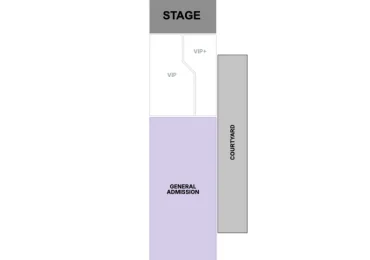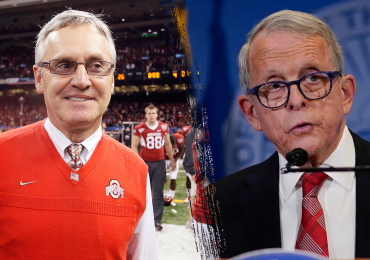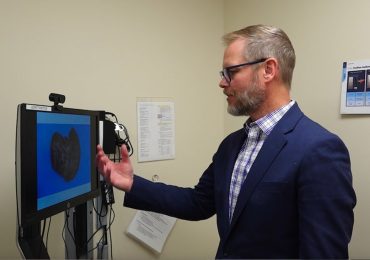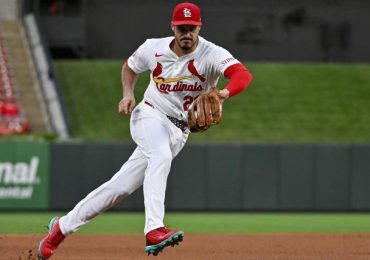There was a sense of deja vu when Pato O’Ward crossed the line at Mid-Ohio last month to win the Honda Indy 200. It made him the first winner of an IndyCar race with a hybrid car, but for McLaren, it was ground it had trodden before: 15 years earlier McLaren achieved something similar, becoming the first team to win a Formula 1 grand prix with a hybrid car.
The 2009 season saw the adoption of electrification in F1 for the very first time, with the Kinetic Energy Recovery System (KERS) being introduced alongside the series’ 2.4-liter V8 engine formula. Unlike in IndyCar, however, it wasn’t mandatory, with only McLaren and Ferrari opting to run it for the full season. The additional 82 horsepower it delivered came with the caveat of adding around 30 kilograms of weight to the car, which was still bound to the minimum weight rule of 605kg whether you ran it or not.
McLaren headed into the 2009 season fresh from its first championship triumph in almost a decade. Lewis Hamilton’s victory after a titanic duel with Ferrari’s Felipe Massa the season before meant that it went into the year as a favorite. Reality was a rather different story, with Hamilton and teammate Heikki Kovalainen combining for just four points finishes, totalling 14 points, in the first eight races of the year. And with Ferrari similarly struggling, it would be easy to blame those early struggles on the new hybrid tech.
“The decision was made to incorporate the hybrid technology because we absolutely thought it was going to be a performance differentiator,” former McLaren chief mechanic Mark Grain tells RACER. “There was the increased weight that came along with it, but there was a combination of less to do with the hybrid and more to do with the weight (and) some of the aero compromises that got us more behind the cue ball on pace than it was the hybrid itself.
“I think the hybrid itself actually helped us in those early days because we could deploy that extra power and keep potentially faster cars behind us, so I think it really helped us out in that early phase of the season.”
Development of the KERS-laden 2009 car, the MP4-24, began in 2008, with the team running a modified version of its predecessor to lay the groundwork, all while keeping up development in the tense ’08 title race.
“What we had done at McLaren was modify an MP4-23A to what was known internally as MP4-23K, so we were running elements of hybridization and so on on that car — it was effectively a mule car,” Grain explains. “We ran that in aero tests, so straight-line work to prove a lot of the hardware on the car, but also the procedures of how a team works.
 An “MP4-23K” test mule got the hybrid ball rolling for McLaren behind the scenes in 2008. Edd Hartley/Motorsport Images
An “MP4-23K” test mule got the hybrid ball rolling for McLaren behind the scenes in 2008. Edd Hartley/Motorsport Images
“We were doing that all the way through the second half of that season, which of course was the championship-winning season with Lewis. So we had a lot of work going on — aero mapping components and trying to win a world championship in 2008, but giving ourselves the best footing for 2009.”
Having the two programs running concurrently had no impact on the 2008 season: Hamilton famously claimed his first title on the last lap of the season having won five times that year. And Grain says that championship push didn’t stifle the 2009 preliminary work either, thanks to the way McLaren was set up at the time.
“It was interesting times with that mule car and going through those processes in 2008,” Grain remembers. “It definitely didn’t detract — we combined the two efforts well. We were doing the groundwork for using KERS in 2009 while we were still aero mapping to help us push for the championship in 2008. That all dovetailed quite nicely,
“At the time, McLaren had a system where there were two technical leads in Tim (Goss) and Pat (Fry) — one would look after one car and one would look after the other, so that was all part of the structure that meant you weren’t taking away from one car and one championship push. You were always balancing the two.”
Of course, 15 years on, the introduction of KERS is little more than a footnote in the story of 2009. The big technical headline was the double diffuser, utilized by eventual champions Brawn GP, as well as Toyota and Williams, early on to great effect. The radical development proved controversial, with the other seven teams protesting their legality. Grain says that McLaren had approached the FIA with its own interpretation of the feature during the off-season, only to be rebuffed.
“What Paddy (Lowe, then McLaren’s engineering director) told me was that we’d applied but our interpretation hadn’t passed muster with the FIA, but obviously for Brawn, Toyota, and Williams, their interpretations had,” Grain recalls. “What (he) said to me in winter testing when we were testing with the MP4-24 in 2009, when Toyota rolled out with their version of theirs, was, ‘Yeah, we asked to do that.’ But the actual fact is McLaren’s interpretation of that aero concept hadn’t been approved whereas the Toyota and the Brawn version had.”
While the KERS and its extra dollop of horsepower had been expected to deliver noticeable performance gains for McLaren, it was the trick aero concept that eventually proved to be the game-changer.
“By the time we got a double diffuser on at the Nürburgring, all of a sudden we were fast again,” Grain points out. “So I think the message in this is that although it may seem that adopting a hybrid system first and being one of the champions of it could be seen as a backwards step because the championship-winning car didn’t have it, actually it was the right decision and it was pioneering.
“Brawn didn’t have the finances and all the rest of it to pursue that — they didn’t have the time in the year because they were starting so late, or the finances to pursue that, so they just had the combustion engine. They made good use of that in the first half of the season and in the second half of that season everybody really caught up.”
McLaren first brought its own double diffuser to the German Grand Prix, the ninth race of the year, where Hamilton qualified on the front row of the grid. A race later, he and the team became winners once again. The KERS-less Brawn team, which had won six of the first seven races, would only win twice more once double diffusers became the norm throughout the field.
 The KERS and ancillary components of the MP-24 created a learning process for the McLaren mechanics as well as the drivers. Rainer Schlegelmilch/Motorsport Images
The KERS and ancillary components of the MP-24 created a learning process for the McLaren mechanics as well as the drivers. Rainer Schlegelmilch/Motorsport Images
At the same time the double diffuser arrived, McLaren was reaping the benefits of a mammoth weight-saving project which negated the losses brought on by the introduction of the KERS. It all combined at the right time to create a lethal combination.
“We adopted the double diffuser at the Nürburgring and we were properly fast and on the pace there,” Grain relates. “Lewis was on the front row and led into the first corner and unfortunately got punted off. So even though the ultimate result at the Nürburgring was disappointing, I remember coming home from that race thinking, ‘Now we can challenge again for the rest of the season.’ And of course we did.
“Then it became a race to try and balance out that extra weight we’d decided to take on with the hybrid system. We shook off over 10 kilos of weight on that car through that season, which I think is an incredible achievement by everybody involved. Even to the point where we stripped down the car and weighed every tie-wrap on the car, collected them, didn’t lose one, and then weighed them, then really went to town on that level of detail.
“All across the car, we were looking at paint application — where we could lose paint, everything — and it was all led by Pat Fry in a really hard push to get the weight down on that car.”
In Hungary, all the hard work paid off. Hamilton won from fourth on the grid after making a lightning start and getting the best of Red Bull’s Mark Webber in an early race fight. With a big gap forged, Hamilton went into tire preservation mode for the latter stages of the race, eventually coming home 11.5s clear of the second placed driver, Kimi Raikkonen of Ferrari. Kovalainen also had a spell leading the field during the race in the other McLaren.
“Budapest has got its own very specific operating setup,” Grain says. “It’s a very specific track when you think about it. You’ve got that long straight, but you try and wind on some downforce there, so that all helped us and think the KERS system and being able to deploy that around the lap in key places — and by this time Lewis was able to use that and the engineering team had really learned how to get the most out of that. So it all came together with a good aero package, some of that weight loss that was still ongoing, and a team that had really learned how to get the most out of that extra energy deployment.
“That extra power deployment around a lap that can be notoriously difficult for overtaking, so I think it all played into our hands at the right time — and of course a great performance from Lewis as well.”
 Hamilton overhauled Red Bull’s Webber in Hungary to claim what would prove a historic triumph for the McLaren MP4-24. Rainer Schlegelmilch/Motorsport Images
Hamilton overhauled Red Bull’s Webber in Hungary to claim what would prove a historic triumph for the McLaren MP4-24. Rainer Schlegelmilch/Motorsport Images
The season was back on track, and another victory would follow at the Singapore Grand Prix later in the year — a place where McLaren would also learn an important lesson about the new-fangled hybrid tech.
“We did our standard post-race checks of all the high voltage elements and there used to be this part of the car called a Cross Car Cable which was a high voltage cable that linked the two halves of the power storage, the battery. And that was showing a low insulation resistance,” Grain explains. “The test indicated that there was a problem with the Cross Car Cable and it was quite an involved job to swap it out. So we made note of it and sent everything on its way to Suzuka.
“We’d regrouped in Suzuka and sent out a specialist electrician from the UK to perform this task again along with all the regular mechanics on the car, and it was OK. After some analysis, it was deemed that the high humidity levels in Singapore had given us a false reading.
“So unfortunately, somebody had made the trip out to Japan when they didn’t need to, and as a precaution we swapped out the cable anyway but of course it was fine. But again, that was just part of that learning process.”
All in all though, it ended up being a positive year for McLaren. While not the championship defense it might have hoped for, the team’s strong end to a season proved to be the genesis of what Formula 1 is today.
“It was a very rewarding season based on that massive weight loss program,” Grain says. “Learning and getting the most out of the KERS system, how the team very quickly adopted and adapted to the protocols of working with a car that had high voltage elements as a race team, and even our pit stop procedures slightly adjusted, but quickly taken on by everybody.”









